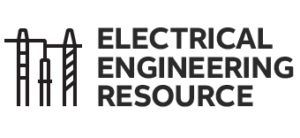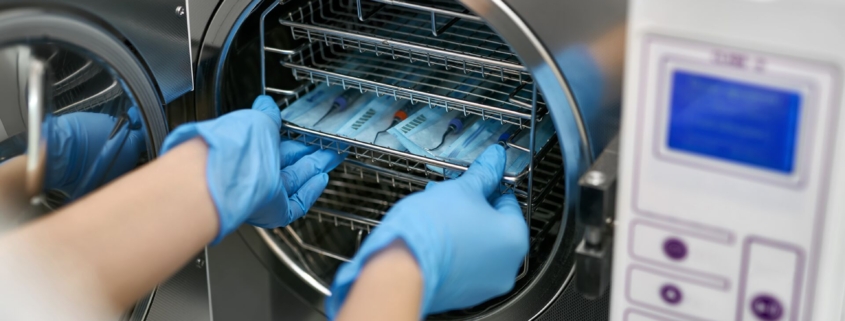Electrical systems in healthcare: Bridging technology and patient safety
Keeping the power flowing to life support systems and equipment used during patient procedures is vital to continuity of care. However, disruptions to a facility’s “supporting systems” can also have a significant impact on patient safety and healthcare outcomes. Choosing the right electrical components can literally save lives.
The OEM opportunity in healthcare and beyond
Fueled by an aging population, the demand for healthcare services continues to rise. Ensuring reliable power to medical facilities helps ensure continuity of care. However, electrical OEMs can also help their customers protect patients and create positive healthcare outcomes by designing “supporting systems” that are safe and reliable.
In this article, we look at five types of systems found in medical facilities and how unplanned downtime can impact patient safety, healthcare outcomes, and business operations. While this article focuses on healthcare, many of these same systems are found in other industries that also require continuity of service. The same principles we talk about below can be applied to pharmaceutical manufacturing, data centers, semiconductor fabricators, and more.
Caution: downtime can be dangerous
Unplanned power outages are among the many contingencies for which healthcare and other mission critical facilities must be prepared. Typical strategies include augmenting electrical systems with everything from UPS systems that can provide several minutes of backup power to generators and microgrids that can keep critical systems running for days in the event of a disaster. However, ensuring patient safety and continuity of care also requires considering the electrical systems used within the facility’s supporting systems. Here are five types of systems in which outages and power fluctuations can impact patient safety and health outcomes:
- Medical device systems – Sterilized medical instruments are a critical component of modern healthcare. If improperly sterilized, these instruments can transmit a variety of bloodborne diseases, including HIV and hepatitis B and C. They can also trigger life-threatening infections from bacteria such as Pseudomonas aeruginosa, E. coli, and MRSA (methicillin resistant Staphylococcus aureaus). Autoclave sterilization involves maintaining specific temperatures and pressures long enough for microorganisms to be destroyed. To ensure patient safety and device efficacy, the electrical systems within these devices must be reliable.
- Water systems – Waterborne pathogens can be a significant threat in healthcare. According to the World Health Organization (WHO), Legionella carries a mortality rate of about 10% in the general population but can rise to as high as 80% among high-risk groups, such as the immunocompromised. Changes in water pressure, such as those that may occur when a pump loses power, can dislodge the biofilm that commonly builds inside of aging plumbing, releasing dangerous pathogens into the facility’s potable water supply and putting patients at risk. The Centers for Medicaid and Medicare (CMS) require healthcare facilities to create a water management plan, including the maintenance of water system equipment, to minimize the threat of opportunistic pathogens, including Legionella.
- Refrigeration systems – Medical refrigeration systems are indispensable in even the most basic of healthcare settings. Many medicines and vaccines require strict temperature controls to remain effective and safe for use. Accurate diagnostics also depend on the integrity of biological specimens, which can be compromised if not stored at the proper temperatures consistently. Like other medical devices, medical refrigeration systems can also include subcomponents, such as keypads to limit access and alarms to notify technicians when a door is left open or the system temperature is
fout of range. - Incubation systems – In addition to refrigeration, biological specimens often require incubation. One such industry standard is USP <797>, which requires compounding pharmacies to regularly assess potential microbial contamination to ensure the safety and efficacy of compounded sterile preparations (CSPs). The standard calls for precise incubation to identify the presence of microorganisms on the sample, such as a swab of a surface used to prepare medicines.
- HVAC (Heating, Ventilation, and Air Conditioning) systems – HVAC systems are essential in healthcare settings, playing a pivotal role in limiting hospital-acquired infections (HAIs). These systems are carefully designed and maintained to control airflow, temperature, and humidity to prevent the proliferation and spread of infectious agents and particulate matter. Healthcare standards frequently dictate precise parameters based on the potential to impact patient safety. Power outages and fluctuations to HVAC systems can lead to contamination or unsafe conditions in cleanroom environments.
Critical components that keep systems running
In addition to ensuring reliability of power to these systems, medical equipment OEMs play a vital role in ensuring the electrical reliability of the equipment itself. Here are a few of the critical components to consider:
- Motor starters are designed to safely start and stop motors by controlling the power supplied to them. These devices typically include overload and short-circuit protection to prevent damage to the motors.
- Softstarters are one of the most common types of motor starters used in healthcare. Softstarters gradually increase the voltage, preventing sudden power surges that can lead to equipment failures. Softstarters are particularly useful for large motors, such as those found in HVAC and water pumping systems.
- Overload relays are designed to keep a motor from overheating by disconnecting the power supply if the motor draws excessive current. While power may be temporarily lost, a motor relay can prevent damage to expensive equipment and decrease maintenance time.
- Variable Frequency Drives (VFDs) control the speed and torque of motors, optimizing energy use and improving system efficiency. They are essential for applications like pumps and compressors in water systems.
- Motor protection relays protect motors from overloads, short circuits, and other electrical faults. They are critical for ensuring the safety and longevity of motors used in water systems
- Circuit breakers protect systems from electrical faults by interrupting the flow of electricity in case of overloads or short circuits. Like overload relays, circuit breakers can prevent damage to equipment and minimize downtime.
- Contactors are used to control the power supply to motors. Able to handle high current loads, they are essential for switching operations, such as starting/stopping, changing speed, or changing rotational direction. Specific switching devices, like AF contactors, are utilized for turning motor loads on and off in accordance with industry standards like IEC 60947-4-1.
- Surge Protective Devices (SPDs) protect systems from voltage spikes and surges. NEC Codes 700.9 and 695.15 require all emergency systems, switchboards, panelboards, fire pumps, and fire pump controllers to be installed with an SPD to help ensure reliable power to vital life/safety loads in the event of a power surge.
Choosing products that are designed to work together and tested in coordination helps ensure ease of implementation, reliable connections, and faster trouble shooting. Choosing a well-known vendor, like ABB, also helps ensure the availability of replacement parts, thereby minimizing downtime.
Future-proof your clients
As the population continues to age, the stress placed on healthcare systems will increase. At the same time, your clients are contending with workforce shortages and stricter scrutiny from regulators and standards boards and other mission critical industries is not just a technical requirement but also a critical component of safety and regulatory compliance.
ABB is committed to the healthcare industry, recognizing the profound impact that innovative and reliable electrical solutions can have on patient outcomes and healthcare facility operations. With our extensive portfolio and deep understanding of the healthcare sector’s needs, ABB remains dedicated to enhancing the safety, efficiency, and reliability of medical services through advanced electrical systems, affirming our role as a key player in bridging technology and patient safety.
See related blog post “5 ways plug-in circuit breakers help eOEMs deliver cutting-edge data center solutions.”
—
Diana Nuccitelli
Market Development Manager
Rosa Lopez
Market Development Manager
Yemi Akoda
Market Development Manager




